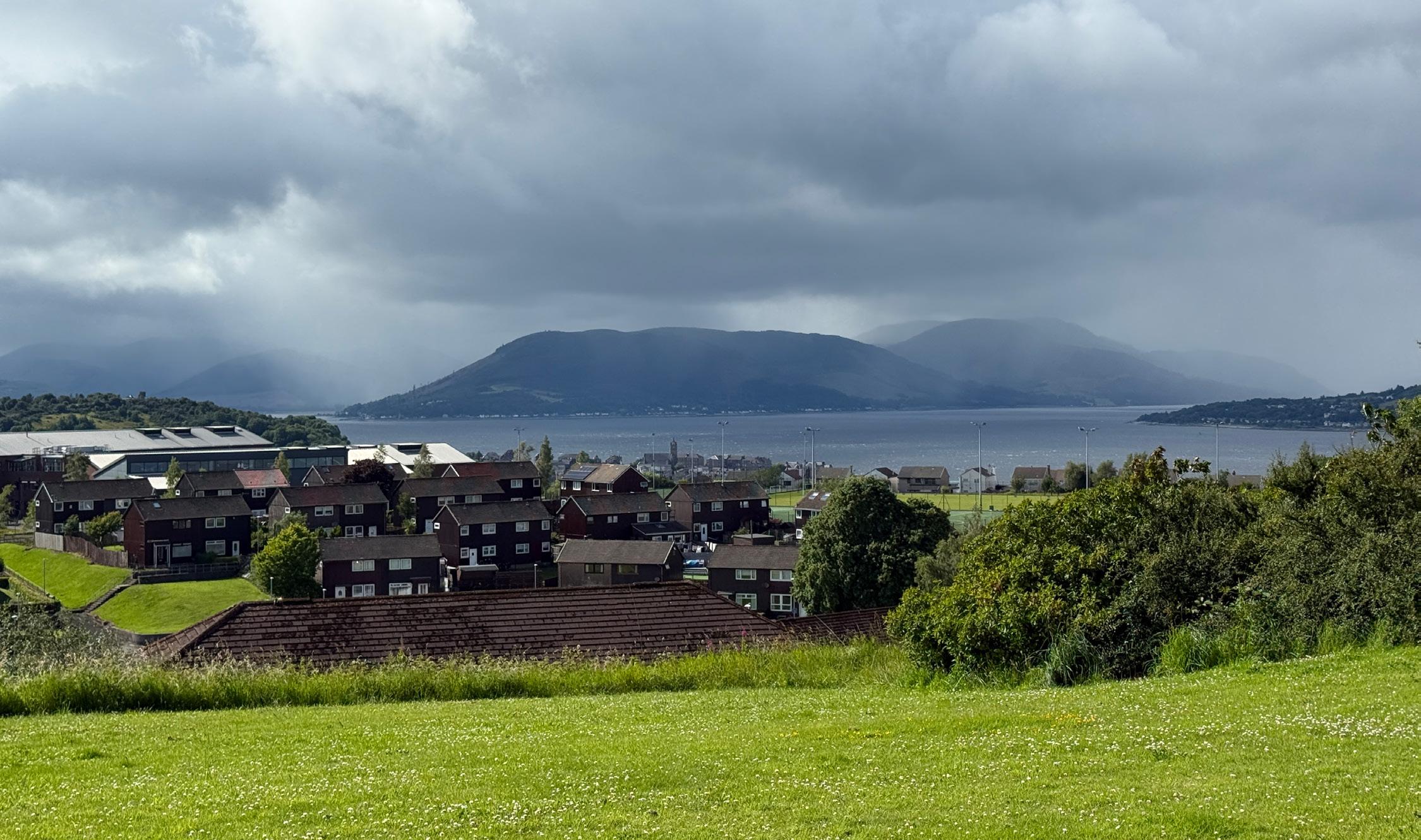











It all started with a wedding invite…
That single invitation quickly grew roots and sprouted something much bigger—it went on to what would become the MotorWerks Power Tour. The wedding may have been the trunk, but the branches grew and stretched in all directions, wrapping themselves around a fiveweek UK adventure. As usual, when my wife Janis and I take a vacation, motorsport always finds its way into the itinerary. This time, though, we decided to super-size it. My mission? Build an itinerary filled with motorsport events, family time, and a few stops to keep my better half entertained and happy.
As you’re about to read in this Teaser magazine, our Power Tour just kept growing. Some stops weren’t even planned, heck, we hadn’t even thought of them before leaving Canada. They just happened!
There’s so much to share that it would take two full issues of our regular magazines to cover it all. So, to build the excitement, we put together this Teaser Edition to spark your interest before the first full magazine drops.

HOW TO REACH US Phone:(905) 467-5148
motorwerksmedia1@gmail.com




It took a bit of detective work to find his shop. Tucked away in an industrial unit with no signage (classic Kevan!), he was simply known by the neighbors as “Racing Kev.” Typical of a frugal Irishman, there was no sign outside and that made him harder to find—but we had a good laugh about it, right Kevan?
Once found, the shop turned into a time machine. We chatted about racing history— particularly the legendary Imps—and I shared the full story of the first-ever customer Maguire Imp, the very car his father once raced. That car,

far north of Scotland by my friend George Coghill
Kevan gave me a tour of the shop, and when he asked if I wanted to take photos, I casually asked, “Mind if I sit in the Jag?” No hesitation. That “Jag” just happened to be a former Formula 1 car once driven by Irishman, Eddie Irvine. Getting in was an experience, and getting out even more so—especially for someone my age and size!
We wrapped up with some world-class bench racing, sharing stories, remembering names from the past, and asking that age-old question: Where are they now?
Big thanks to Kevan for the warm welcome and tour.
PHOTOS:
RIGHT: Yours truly sitting in the ex Eddie Irvine F1 Jaguar
LEFT: The first customer Maguire Imp, completed by George Coghill and Ian Rae

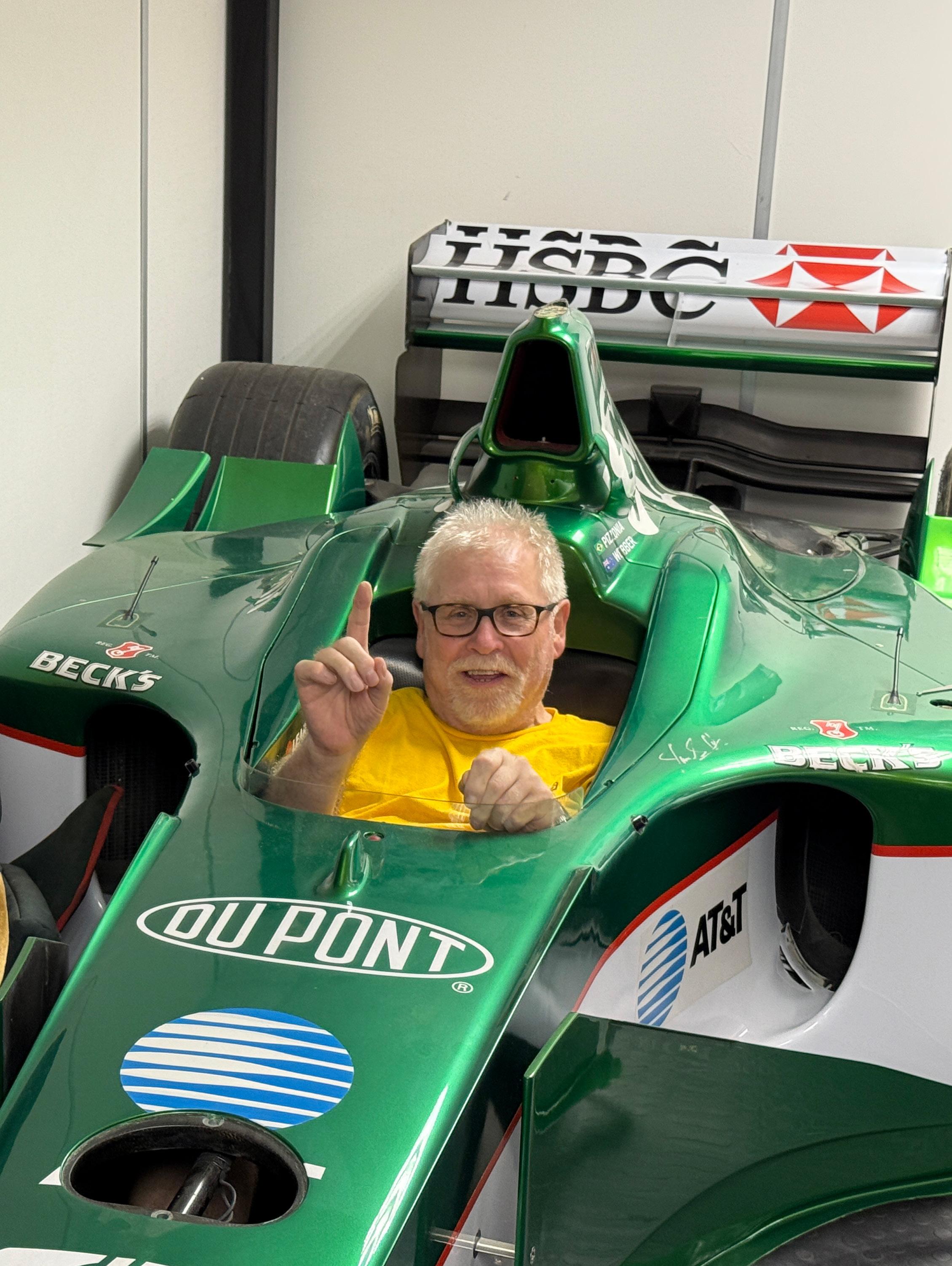

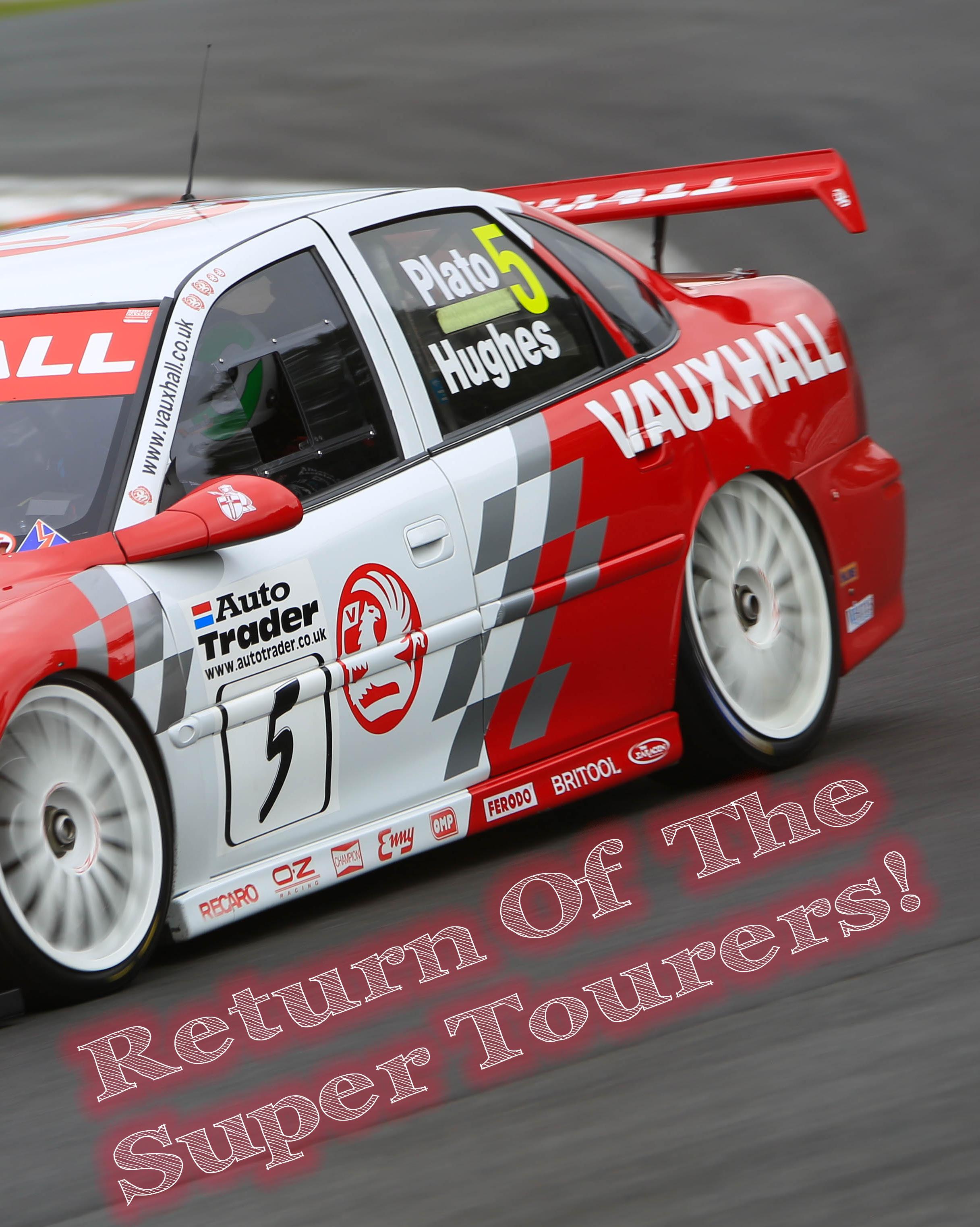

This was a bucket-list event for me, it would be my first time at the legendary Brands Hatch circuit and my first chance to see the iconic Super Tourers in action. While the headliners were certainly the Super Touring cars, the support races put on by the Classic Touring Car Racing Club (CTCRC) could have headlined any classic racing event anywhere in the world. What a bonus!
Brands Hatch was conveniently just an hour from our niece’s home in Burgess Hill, so the plan was to travel daily. That plan was made even easier thanks to Steve Jackman, the CTCRC’s top lensman, who had been incredibly helpful in the months leading up to the event. I’m thrilled to say that Steve has agreed to contribute his photography to MotorWerks Magazine and our social media pages on an ongoing basis. Unlike North America, there was no formal media meeting. Instead, I met Steve and his lovely wife Betty in the Media Centre. As any racer knows, motorsport life runs much smoother when you’ve got the support of a good woman.

After signing on and getting our photographer vests, we were ready to hit the track.
Brands Hatch has two configurations: the shorter Indy circuit and the full-length Grand Prix track that once hosted the British GP. In true fashion, I had my days mixed up—I thought Saturday was the Indy layout when, in fact, it was the GP circuit. Oops.
I had braced myself for classic British drizzle, but we were met with a heatwave. We’d left 30°C weather in Canada, and the UK was matching it. This was to be my first two-day motorsport shoot since undergoing a stem cell transplant. One-day events had been my limit since then, so this would be a personal challenge. Fortunately, Steve was ready to fill in whenever needed—thank you, sir.




Another famous Scot in the BTCC was David Leslie. Always cheered for him. A huge talent who left us too soon!

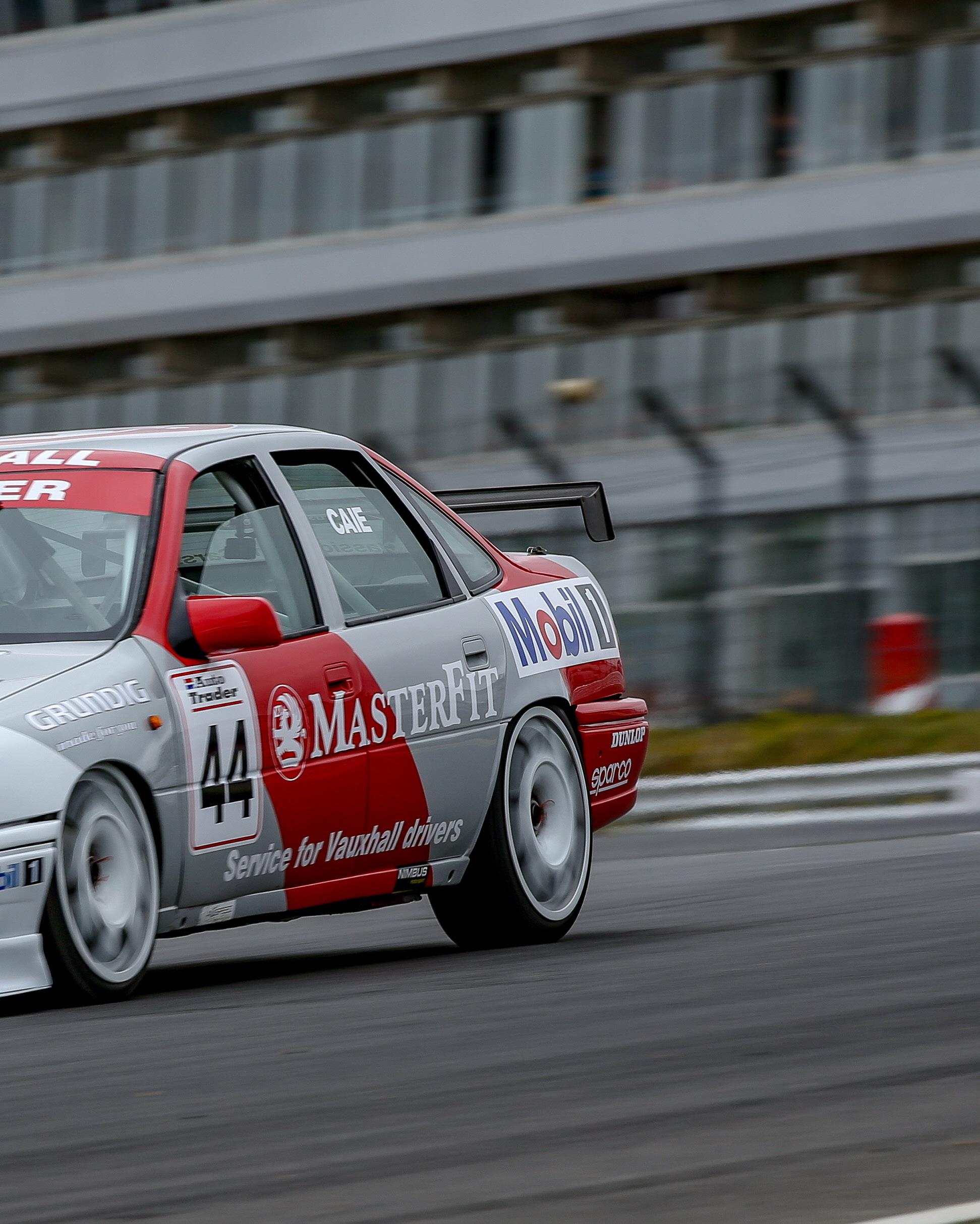

First out were the EVERHARD Pre ‘66 racers and I was over the moon when Imp racer James Ibbotson arrived at Druids corner and proceeded around it in adrift that Ken Block would have been proud of. One thing you are going to find out about me is that I love the Hillman Imp and all of its variants. Back in my car racing days my first race car was a steel Imp that ran in Special Saloons, the next race car was also Imp based, a Clan Crusader that we ran in Modsports. There certainly were plenty of Imps in the Pre-66 class for me to drool over as you can see by some of the included photographs. The man of the weekend was former BTCC racer Sam Tordoff in his notchback 60s era Mustang shown above.





Ever since the British Saloon Car Championship started back in the 60s, the small capacity class quite often produced the closest racing. The Austin Mini and its many variants was perfectly suited to Britain’s race circuits but then a Scottish invader arrived. Built in Linwood by the Rootes Group, close to the River Clyde the Hillman IMP had a few variants of its own, the Singer Chamois and Sunbeam Stiletto being just two of them. The Everhard Pre-66 at Brands Hatch was an Imp owners dream, make sure you don’t miss all the Imp news in the next magazine.



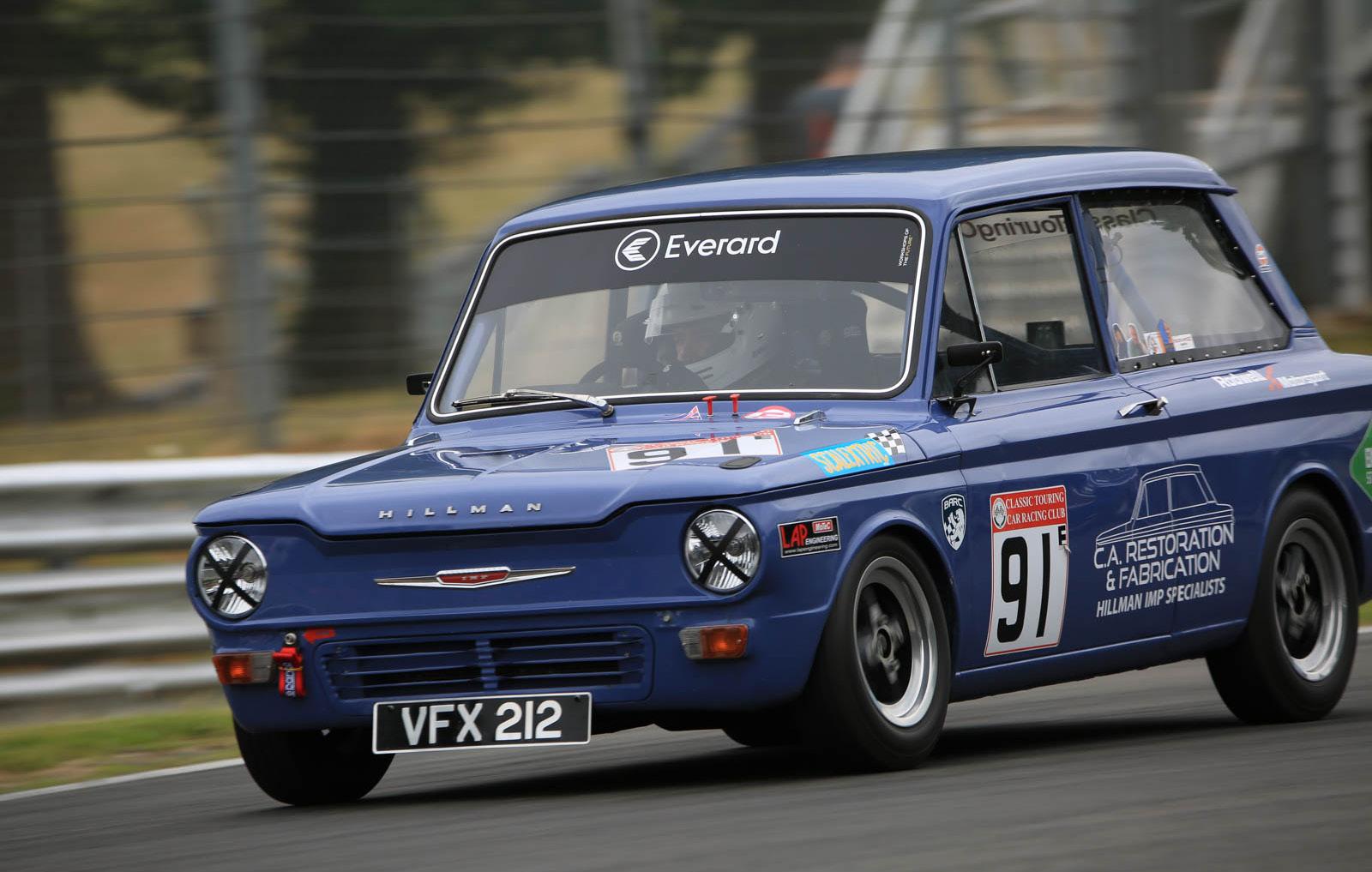
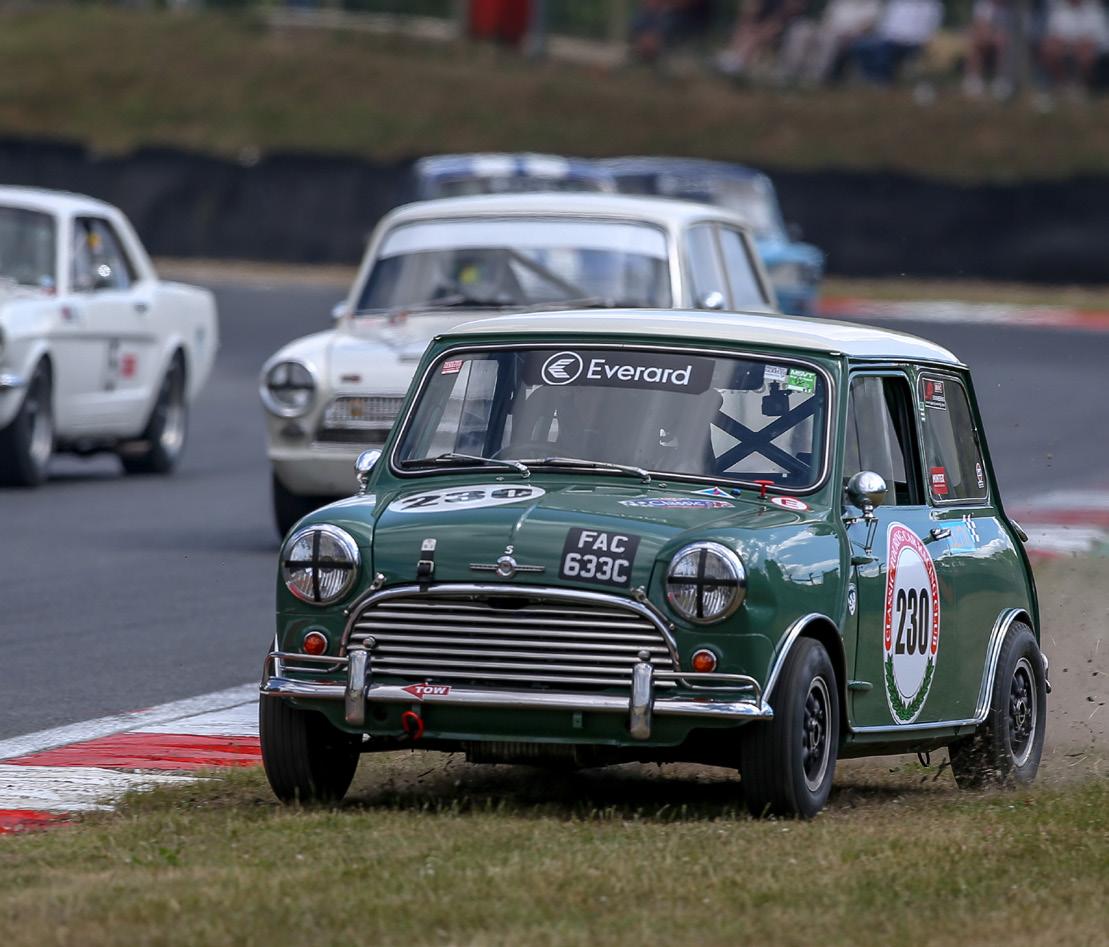

Being at Brands Hatch gave me the chance to finally catch up with a fellow Scot I’ve been chatting with on Facebook for well over a year, Barry Sime.
Barry races a beautifully prepared 1275cc Mini that he built to FIA specification. Yes, he built it, or more accurately, rebuilt it. The car was originally raced by his father, Jimmy Sime, at the legendary Scottish track, Ingliston.
And here’s where things get interesting. Jimmy raced the Mini back in the 1960s, a time when safety wasn’t exactly the top priority for most competitors. In fact, the Mini was run as a special saloon, about as far removed from FIA spec as you can imagine. It didn’t even have a roll cage.
Like many sons of racers, Barry started out in karts, then transitioned into single-seaters before discovering what many of us already know: motorsport is a rich man’s game. Life, as it often does, intervened, he got married, started a family, and racing took a back seat.
It wasn’t until recently that the Scottish duo began to look seriously at what they could do with Jimmy’s old Mini.
I had the opportunity to shoot some photos of the car, and in an upcoming issue of MotorWerks Magazine, the Sime Racing and Engineering Mini will be featured in a full article.



While we’ve already talked about the smallcapacity machines, but overall wins usually come from one of two camps: the ever-popular Lotus Cortinas or the thunderous American iron.
Looking back, it’s not far removed from how things were in the 1960s. The biggest difference now? The names behind the wheel.
Back then, it was legends like Graham Hill, Jim Clark, and Dan Gurney who often stole the show. Today, it’s more likely to be drivers who made their names in series like the BTCC, bringing a modern flair to historic racing.





Was this Holden Commodore in the Gary Rogers Motorsport garage when we got our pit tour in 2018? Who knows but it is such a cool car to take photos of. Holden Racing UK’s Alex Sidwell took two of the four wins available this weekend in the Classic Thunder & Historic Thunder races.

To keep fans entertained, some classes were amalgamated to ensure full grids and plenty of action on track.
The Classic and Historic Thunder classes were a perfect example. Sponsored by PRG Trailers and RikkiCann.com respectively, this merged field delivered a magnificent show.
MotorWerks Magazine had a personal connection to two of the weekend’s winners. Alex Sidwell’s Holden Commodore originally hailed from Gary Rogers Motorsport in Australia. I can’t help but wonder if it was one of the cars we saw in the Bathurst pits during our 2018 visit. The other dual winner was Adrian Bradley—none other than the brother of our good friend Damien Bradley.
As mentioned earlier, ex-BTCC racer Sam Tordoff dominated the Everard Pre-’66 class, but he wasn’t the only pro racer putting on a show across various categories. Talented lady racer Abby Eaton was one, she was particularly impressive at the wheel of her dad Paul’s Holden Commodore.
Colin Turkington, despite never having driven a Super Tourer before, slotted Jason Hughes’ Vauxhall Vectra onto pole after overcoming testing issues on Friday—by a remarkable 1.6 seconds on Saturday morning. BTCC star Tom Ingram was another who arrived unfamiliar with his car for the weekend, but he adapted quickly. Driving Jeremy Sutton’s Tony Longhurst-tribute RS500 Group A Ford, he grabbed pole position ahead of Paul Mensley in a similar Sierra—by just 0.4 seconds.
Just wait until the full magazine comes out, there is much more about this event in it!
The huge bonus to the weekend was actually meeting some of the people I had only chatted to online and setup future articles for the magazine.
Can you imagine what cars we are currently gathering details on now?






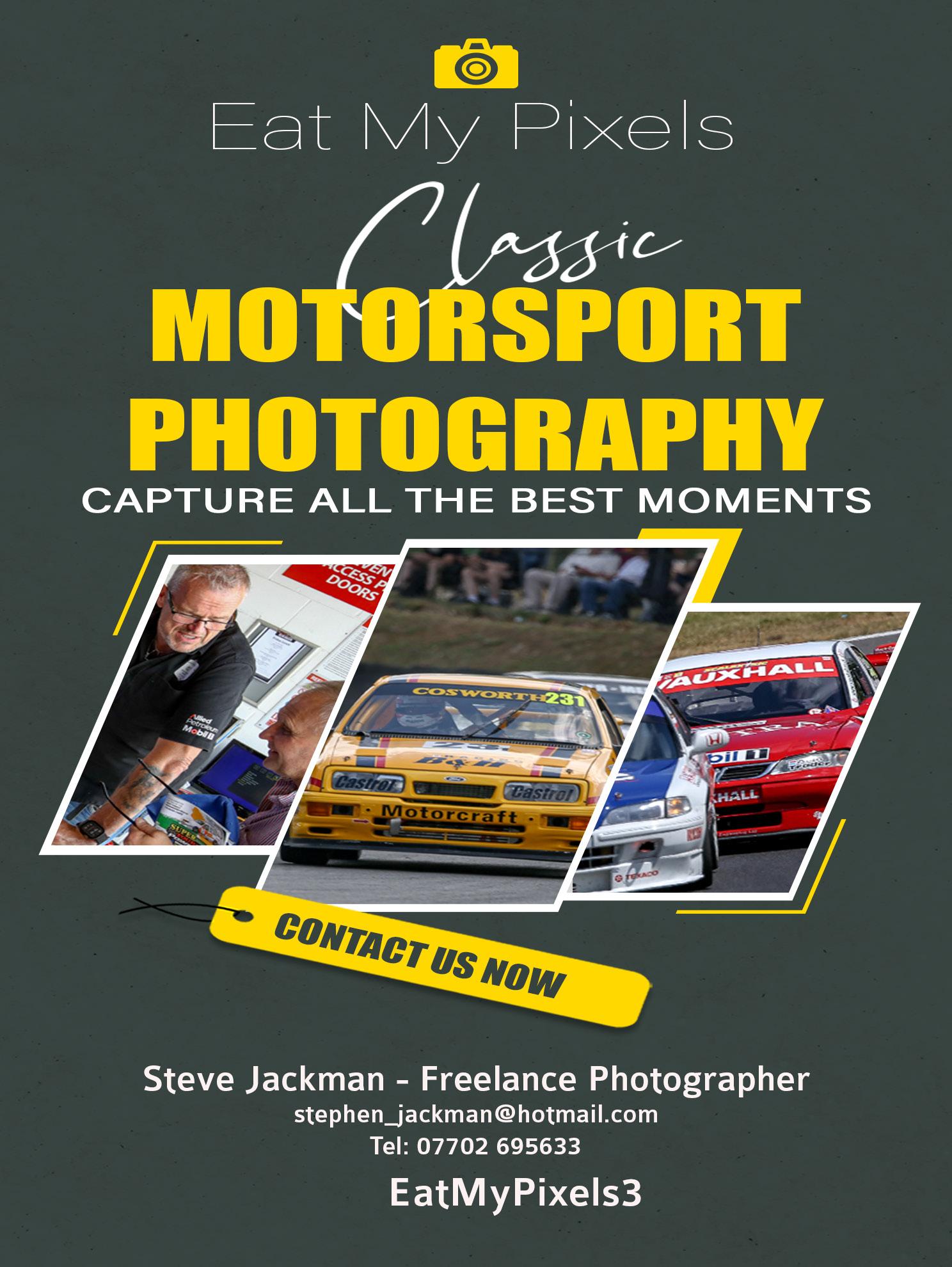










Back in the sands of time—when I had something resembling a racing career—I competed in a national karting series supported by Kart and Superkart Magazine. Some of the drivers from that era went on to proper racing careers, while others remained in the karting world, running teams or developing products that pushed the sport forward.
One driver I’ve followed ever since I left for Canada is Steve Tillett. The Power Tour gave me the chance to reconnect with him after nearly forty years. When I last saw Steve, he was working in his father’s upholstery shop, but he was already showing signs of innovation. We raced against the likes of Gary Prior, Wayne Homer, Louis Di Resta and others—names you might not recognize, but trust me, those boys
were fast.
Steve began making kart seats on the side, using a carpet-like material that could be custom-molded to fit a driver’s body. The goal was to provide better support and reduce the brutal rib-pounding we all suffered in those solidly suspended karts.
I still remember calling Steve one cold night from Northern Scotland. I was sitting in my kart seat in our front room, my father beside me with a tape measure, and together we relayed measurements for Steve to build a custom seat for my Kali/Redhill Yamaha kart—the one I was preparing to bring across the pond.
But Steve didn’t stop there. In 1996, his company became the first in the world to develop a karting rib protector with a hard outer shell: the

Ribtec. As he traveled to major international kart races to further refine his Tillett seats, he realized that even with improved seat support, many drivers were still struggling with rib injuries, especially due to the extreme grip levels from
That insight led to the development of the Tillett Ribtec rib protector, which not only addressed these injury issues but also sparked a whole new category of safety gear in karting. protectors like the current version the Tillett P1 Defender are recognized as essential equipment by the FIA.
Since then, Tillett rib protectors have helped countless karters not just stay safe, but

win races they may have otherwise had to sit out due to injury.
And if you think this innovation is just for club racers, think again. The list of F1 drivers who’ve worn Tillett rib protectors while karting reads like a Hall of Fame: Lewis Hamilton, Michael Schumacher, Sebastian Vettel, Kimi Räikkönen, Jules Bianchi, Max Verstappen, Lando Norris, George Russell, Zhou Guanyu, Mick Schumacher, Lance Stroll—and many more. Watch for the prodcast we shot with Steve, we talk karting, memories and more importantly staying in good health!











Our next stop took us to the Midlands to catch up with former BTCC standout Matt Neal. While no longer competing in the UK’s top tin-top series, Matt is clearly enjoying his time preparing and racing classic saloons and doesn’t seem to miss the high-pressure environment of the BTCC one
He’s still very much active in the motorsport world through his Team Dynamics wheel brand, which continues to supply wheels for several major series, including the Australian Supercars Championship. He hinted that some exciting new wheel products are on the horizon and promised that MotorWerks Magazine would be among the first to hear about them.
Although Matt no longer fields a team in the BTCC directly, he remains connected through an agreement made before the 2024 season with EXCELR8 Motorsport. This multi-year deal allows EXCELR8 to use the Team Dynamics facility in
Droitwich as their base for both their BTCC and Porsche Supercup programs. Involving more than just space, the agreement gives EXCELR8 access to the wealth of technical expertise and personnel that Team Dynamics built up during their many successful years at the top of British motorsport.
It was my second Matt Neal experience of the trip as his record setting Nissan Primera in which he became the first independant to win a BTCC race outright in the modern era. When he accomplished that feat to took £250,000 out of BTCC head honcho Alan Gow’s wallet.
As a 6-time BTCC Independants Champion it was only natural that he came to the attention of the various manufacturers in the series and subsequently drove for Honda, Peugeot. What else did we see? I guess you just have to wait until the new issue of MotorWerks Magazine comes out.
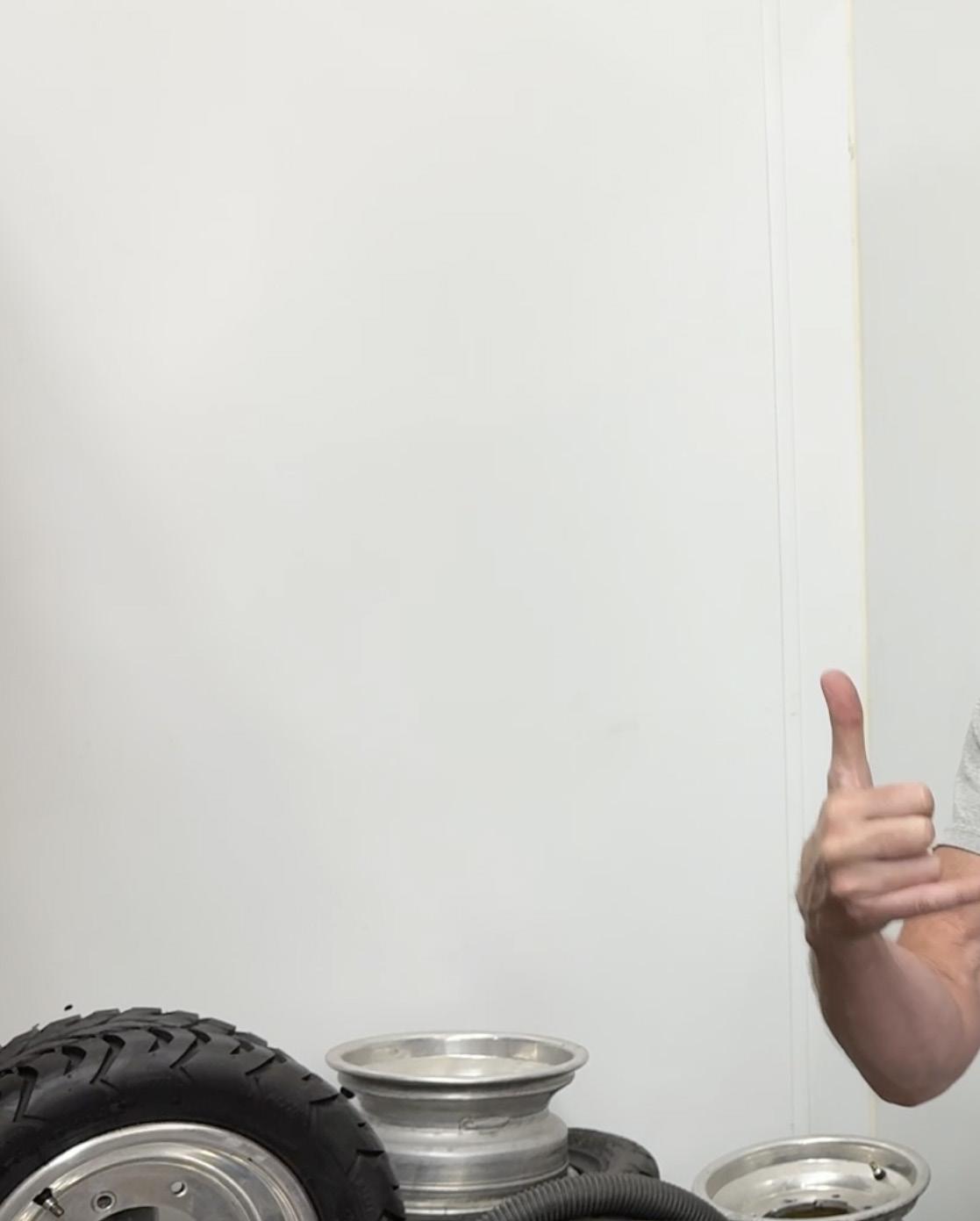
Matt started off telling us about building a special lawnmower for Honda and went to tell us about a refugee who got a huge surprise in Germany. You will have to watch one of our videos to find out exactly what it was.



Stop #5 on the Power Tour wasn’t even on our radar when we left Canada, but a quick look at Google Maps showed us how easy it would be to visit a facility that’s been part of the backbone of British motorsport for decades.
Demon Tweeks, located in Wrexham, Wales, was founded in 1971 by Alan Minshaw. Initially, the company focused on supplying racers with the equipment they needed both for themselves and their machines. With Minshaw’s background in the motor trade, it was only natural that the business expanded into performance parts and road tuning. A respected racer himself, Alan often competed in cars supported by Demon Tweeks, and as his children grew older, they joined him—both in the business and behind the wheel—piloting Demon Tweeks race cars on weekends.
For those of you across the pond, the best way to describe Demon Tweeks is as the UK’s answer to Summit Racing or Jegs. Today, the company serves both professional racers and road car enthusiasts, offering a vast range
of motorsport products and services. It currently ships to over 140 countries worldwide. Sadly, founder Alan Minshaw passed away in April 2024 at the age of 88, but his legacy continues to thrive.
Personally, I have a long history with Demon Tweeks. Back in my teens, I bought parts from them and even ran their window banner on my 1972 Ford Escort Mexico. Touring their state-of-the-art showroom brought back a flood of memories. It’s the perfect place for racers to try gear out before purchasing, with a massive display of Tillett racing seats, plus rows of helmets and race suits ready to be fitted.
Just as we were leaving, I spotted a latemodel race MINI parked outside on an open trailer. Both the car and trailer proudly displayed Glasgow BMW and MINI Specialists logos. Janis had noticed the crew entering the store earlier, but I must’ve been distracted—probably drooling over some of the cool gear on display.
So I grabbed a few business cards and headed back inside, where I introduced myself


to Jonathan Wild and his team. They were en route to Oulton Park to compete in the Scottish MINI Cooper Cup Series, which was holding its away round that weekend. I told them about Miniology Magazine and suggested we’d likely be interested in featuring them in an upcoming issue. That went down well, the whole


team lit up with big smiles.
I wished them good luck and headed back to the car for our short drive to Leeds, where we’d be spending the night.




Scottish weather greeted the Scots at Harewood Hillclimb reminding them of home! But it was

English youngster Alex Coles who mastered the wet and qualified number 1 for the Top 12 Runoff!

Here is a selction of Scots who made the trek to Yorkshire to play with cars in the rain!
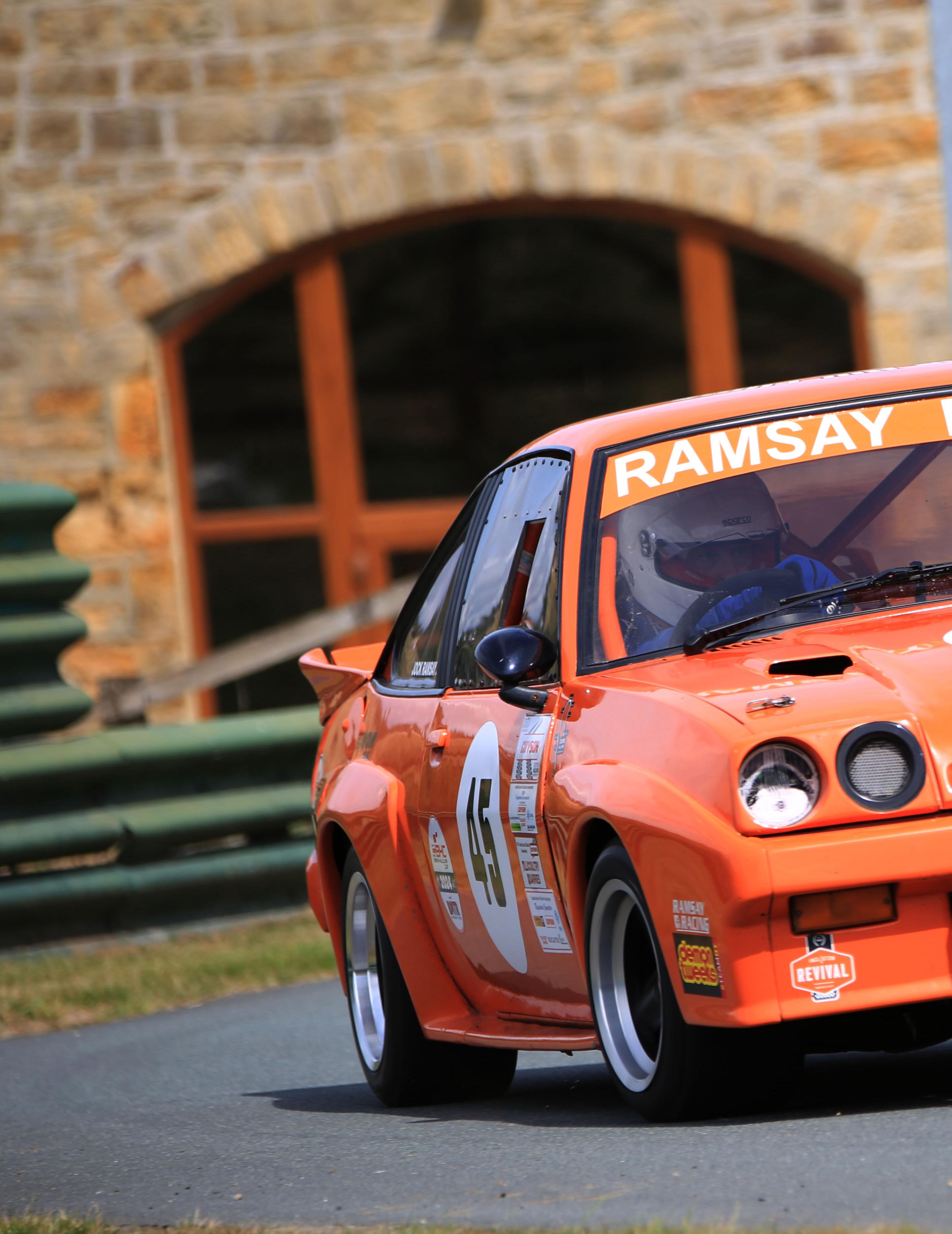
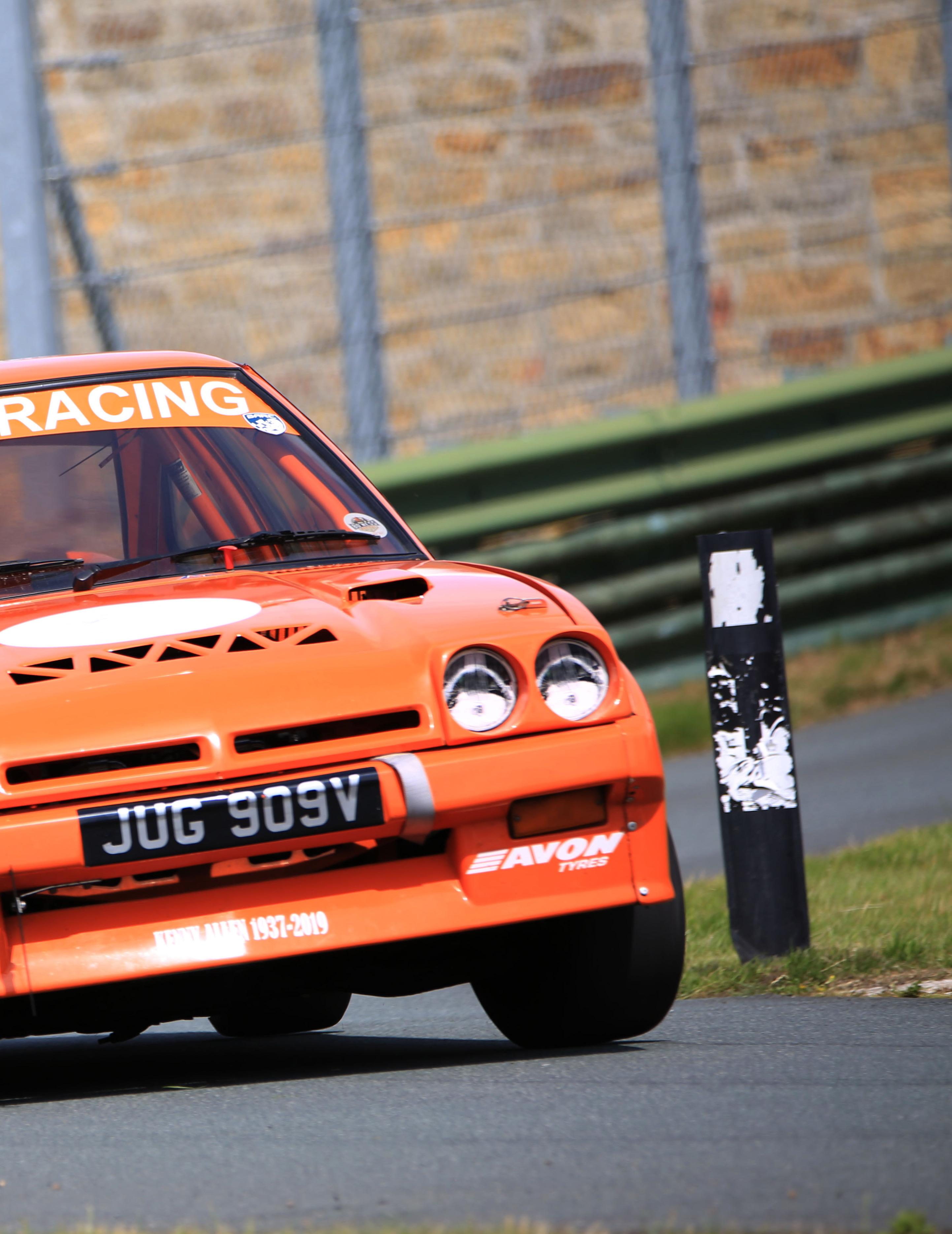





Gary Warren, the car is for SALE!




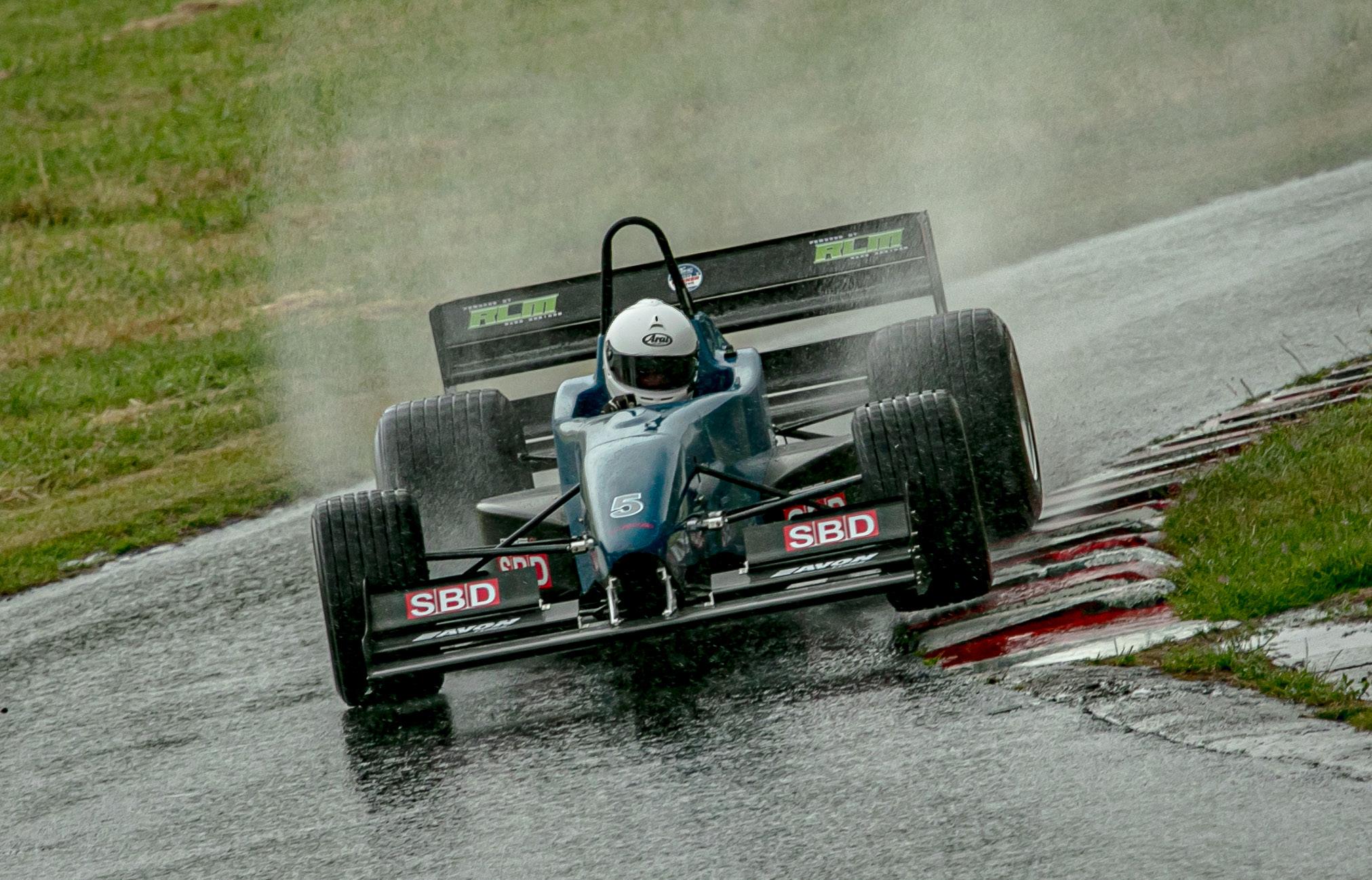



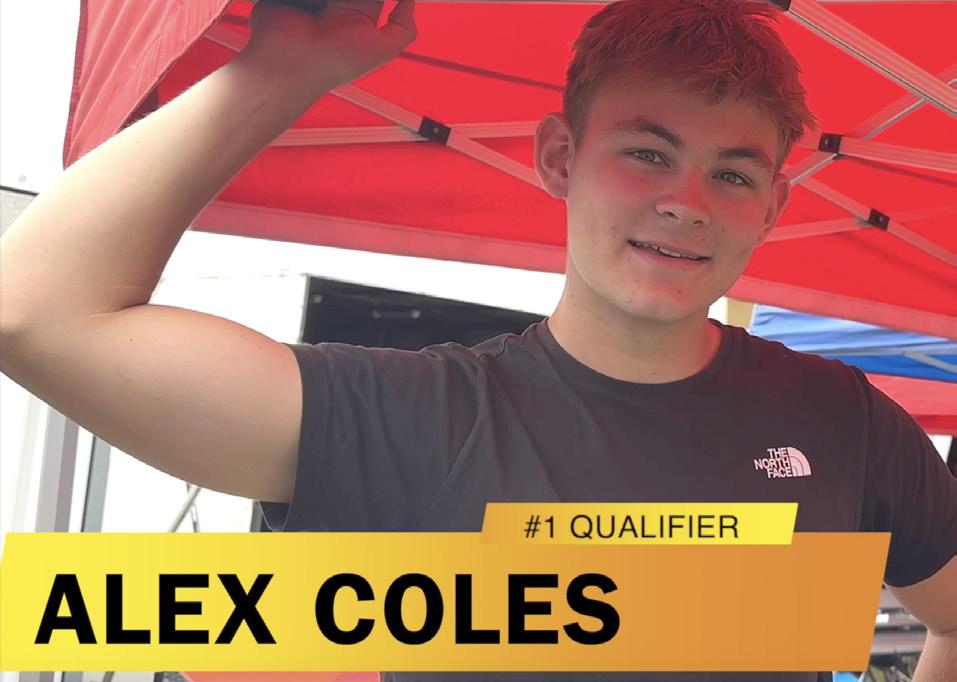



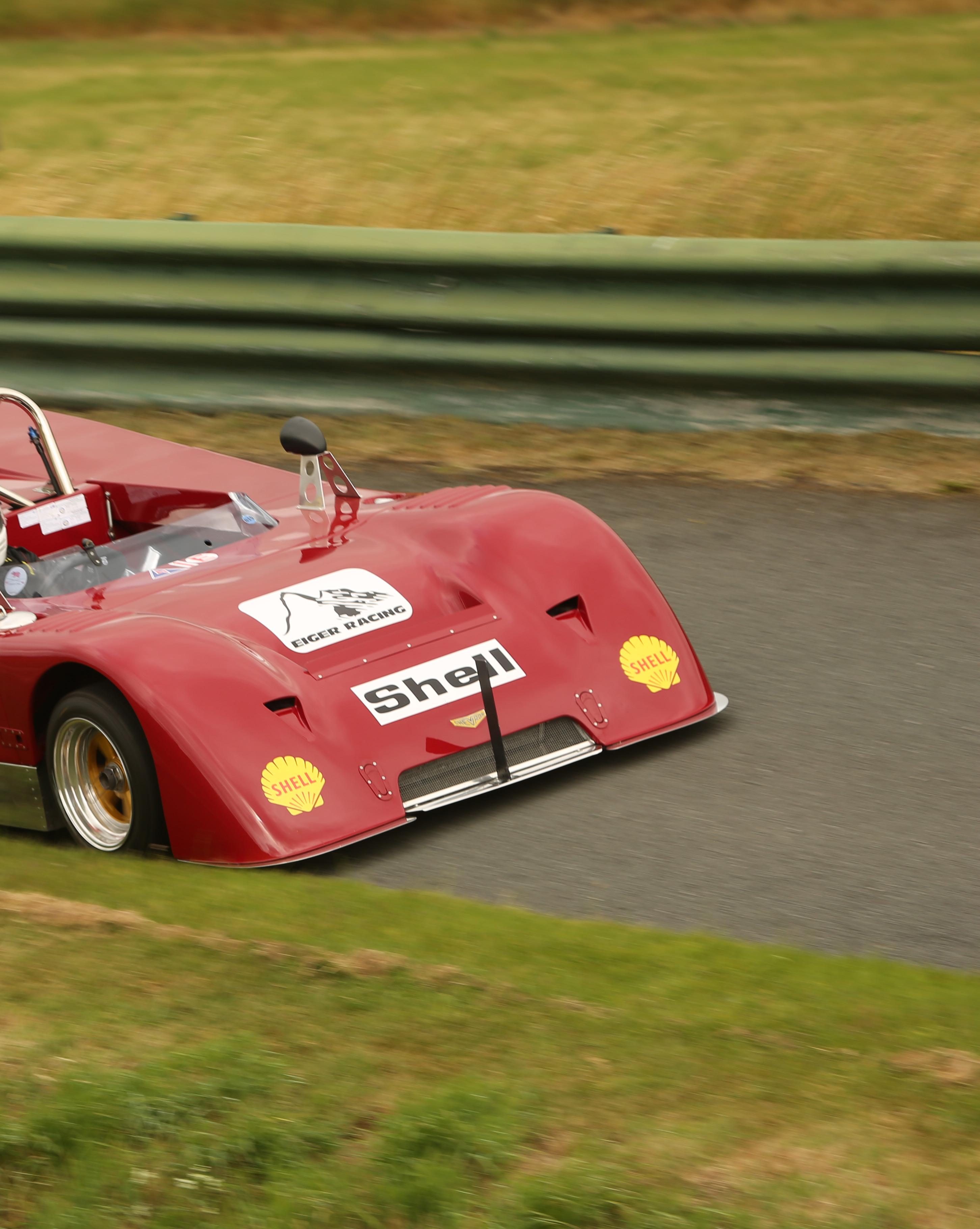











The one place we never actually expected to end up was at Ingliston and the Royal Highland Centre. Not that I’m complaining—it was great to go back and check out the circuit where I raced a Modsport Clan Crusader back in 1978.
We’d just finished checking out the famous Kelpies water horse sculptures in nearby Falkirk and headed towards Edinburgh. Our arrival brought us to a parking lot at the west end of the showground, an area I didn’t even know existed. I had no idea the grounds stretched that far west, and it was surprising to see nearly every acre of grass used to display cars of all kinds. The layout was well thought out too, with areas divided for different car clubs to park together. The vehicles ranged from completely stock to wildly modified. What made this show stand out from others was that it was both an indoor and outdoor event— something I hadn’t seen before but was definitely looking forward to experiencing.
So, why were we there?
Well, I got a message from my buddy Ilya Krylov asking if we were back in Canada yet. I told him no, and he shot back, “I’m in Edinburgh for a car show.” After being away from Scotland for nearly 40 years, I still knew where it had to be: Ingliston. And I was right.


Ilya—“Ruski” as I call him— had come north with the Haltech UK crew, bringing his insane Time Attack Renault Clio with him. After some gentle negotiation with the wife, we reshuffled our schedule so we could catch up with Ruski on Sunday. Did I notice any changes to Ingliston? Absolutely. Gone were the old stinky cow sheds, a new members’ pavilion had appeared, and the Arena section of the racetrack was more or less gone. But we still caught some on-track action by heading over to the hairpin at the west of the circuit, where drift taxis were taking passengers for wild, smoky rides.
After taking it all in, we made our way to the indoor section to find Ruski. Eventually, we tracked him down and managed to grab a few minutes to record a podcast about the Clio and the mods he’s made since we last featured the car in MotorWerks Magazine.
Click on the photo above of Ruski to open the podcast and hear what he’s been up to. And do yourself a favour—check out @RuskiWeldFab on social media. Ilya has built an incredible library of videos that any racer—whether you’re building your own car or just driving someone else’s—will find incredibly valuable.













Stop #9 – From Beith to the Borders: In the Footsteps of Legends
The next Power Tour adventure along with my cousin David and his wife Fiona took us from their home in Beith on Scotland’s rugged West Coast across to the East, and into the quiet border town of Duns. To some, Duns might just be another name on a map. But to motorsport fans, it’s hallowed ground.
This unassuming town was home to two of Scotland’s greatest racing drivers, who just happened to be cousins. One of them needs no introduction: Jim Clark, still regarded as one of the finest Formula One drivers to ever grace the grid. Many would argue he ranks above Senna, Schumacher, and even Verstappen. Like so many of his 1960s peers, Clark’s career and life was tragically cut short in 1968 in a F2 race in
At the time of Jim’s passing, his cousin Doug Niven was a 22-year-old farmer with zero
racing ambitions—not even go-karting. Yet, in the time that followed, Doug jumped straight into a race-prepared Ford Anglia and the rest, as they say, is history. He even caught the attention of Lotus in his early years, but with family disapproval hanging over the idea of singleseater racing, Doug stuck to saloon cars and excelled at it.
From Memorial Room to World-Class Museum
Our visit to Duns was for two reasons. The last time Janis and I were here, the Jim Clark Memorial Room was just that, a single, modest space dedicated to his memory and two Formula One World Championships.
Opened in 1969 by Clark’s parents, James and Helen, the memorial has always been a family affair. I still have the poster I bought on that first visit, it hangs proudly in my man cave, a constant reminder of the Scotsman I consider the greatest driver of them all.


In the years since, the Jim Clark Trust has worked tirelessly to preserve his legacy. Doug Niven, along with two other cousins, serves as a family representative on the Trust. The three played a huge role in transforming the Memorial Room into the stunning museum now standing on Newtown Street, an essential pilgrimage for any racing fan.
Doug himself was a hero of mine, a crowd-puller in the Special Saloon class at Ingliston. When we sat down for a podcast recording, I tried to draw out some of the stories Scottish race fans might not know.
It turns out the Niven family’s move south mirrored Jim’s, from Kilmany in Fife to the Borders. As a young man, Doug was surrounded by motor racing glory in a rather unusual way— while Jim was racing abroad or living in Bermuda for tax reasons, Doug would return to Jim’s
home each evening as the unofficial guardian of his race trophies. If you’ve ever been to the museum, you’ll know there were plenty to look after!
I also couldn’t resist asking Doug about his infamous encounter with an Ingliston toilet block. He chuckled, “That’s probably the question I get asked most!” We got the full story, but you’ll have to wait for the podcast to hear it.
Talking about his own racing career, Doug was refreshingly candid, he preferred to buy cars that others had already developed and made competitive. One such machine was an ex-Wylie’s of Glasgow Ford Escort, previously run by Graham and Jenny Birrell. While the Birrells worked to sort their new cars, Doug enjoyed one of his most successful seasons behind the wheel of their old one.
If you’ve ever wondered what makes Duns special, it’s not just the museum—it’s the people,


the stories, and the unshakable connection between two cousins who took very different roads into racing, but left an enduring mark on Scottish motorsport.
So why not plan that trip to Duns, in addition to the Museum there are many Jim Clark themed things to do. The Jim Clark cafe Bistro is located just off the town square, just remember they are closed Mondays. And a short drive away in Chirnside you can Find the final resting place of James Clark, OBE, born 1936, died 1968. It is quite poignant to spend some time in that quiet graveyard reflecting on the career of that
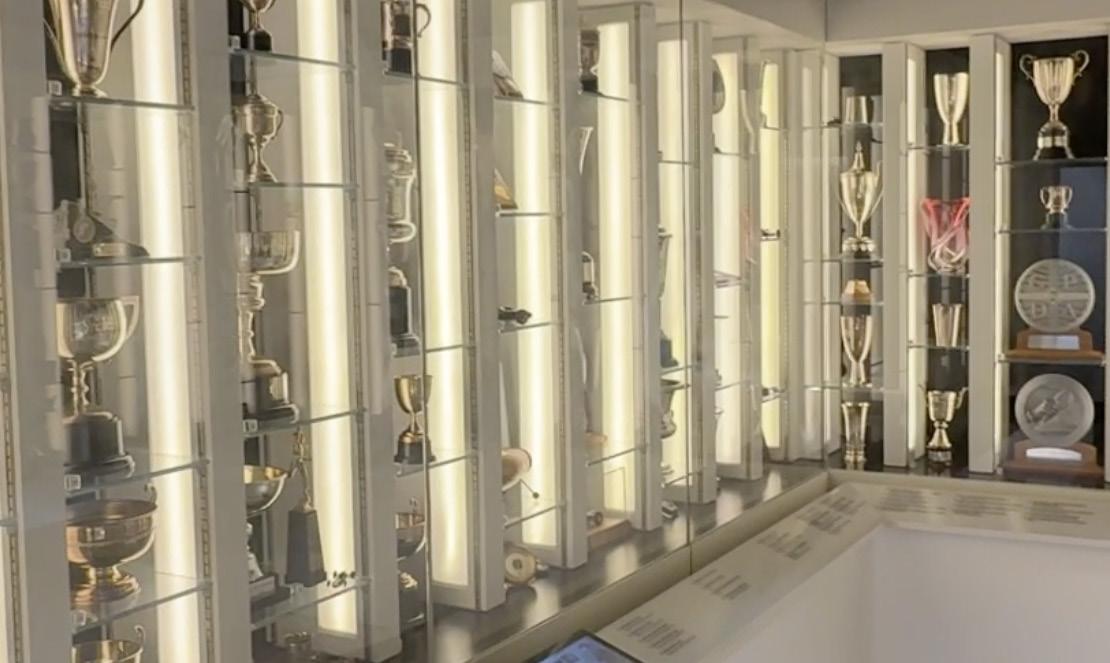
great man. Motor racing was particularly brutal back then, with many talented drivers dying in senseless accidents that could have been prevented.
Fellow Scotsman Jackie Stewart, the racer who eventually surpassed Clark’s record of 25 Grand Prix wins had seen enough and was the driving force in making race circuits safer. Thankfully his hard work paid off and we very rarely see a driver dying in Formula One. Doug told us that Stewart was a huge supporter of both the trust and the museum and thanks Sir Jackie for that support.





It was déjà vu all over again, me, George Coghill, a singleseat race car, and a moment that felt frozen in time. The last time we’d shared a track with a single-seater was 37 years ago, just four days before I emigrated to Canada. A lot has changed since then, but our passion for motorsport clearly hasn’t.
George and I go way back. He came into racing later than most, with his first race car being a Hillman Imp he bought off local racer George Jack. That car carried plenty of local history, not because it was slow, but because of the previous characters who had driven it.
Former British Leaders Champion Barrogill Angus brought it into the county, followed by local garage owner Colin Johnston, who had a big off in it before re-shelling the car with a “body in white” and selling it on to local electrical contractor George Jack. After decided to focus more on Autocross and Autotest he sold the Imp to Coghill. When George picked up a new, lighter Rawlson panneled Imp for the following year, I became the steel Imp’s next custodian.
We became a race team, operating out of George’s Knockdee farm and one of our most memorable projects was completing the build of the first-ever customer Maguire Imp. Imppowered cars became a constant in our initial motorsport adventures, and for a pair of country lads, a farmer and a sparkie, we did pretty damn well considering we had no idea how to scale a car or check for bump steer.
Flashback to 37 years ago: the Sunday after my going-away party. To say I was “worse for wear” would be putting it kindly. Colin Johnston picked me up and we headed to Wick, where the Caithness Car Club was running a sprint at Wick Airport - what we affectionately called The Drome. George was already there, pacing around his Van Diemen RF FF2000 looking puzzled
The issue? Both front tyres were blued— clearly overheated.
This particular Van Diemen had its own story. It was the sister car to Ayrton Senna’s when he raced with Rushen Green Racing, having previously been driven by Kenny Andrews. Though it wasn’t in FF2000 trim anymore, it had twin side-draft Webers and a few other tweaks— it was still a proper bit of kit.
So, I fell back on an old karting trick. I swapped the front wheels side-to-side, even though they were unidirectional, dropped the pressures a touch, and told George to go out and scrub them in gently, no sliding around. When he returned, the tyres looked pristine. We swapped them back, sent him out again, and George



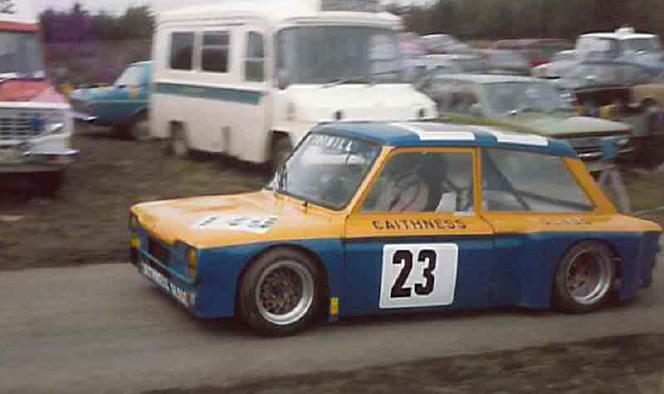


Stemster House, Halkirk, Caithness, Scotland
Intimate celebrations, surround yourself with love and focus on quality time with your nearest and dearest. Let us help you make the wedding of your dreams become a reality!
www.stemsterhouse.com
did the rest. I can’t remember exactly how he placed, but I’m fairly certain he won his class, he may have even got FTD. He was grinning ear to ear when he came back and said, “You can’t go to Canada, who’s going to look after the car?”
So how did this weekend go? The weather forecast really sucked, 90% chance of rain on both days. And the reality of it? I’ve been at wet events that have been much, much wetter! On the competition front it was much the same! George smashed two new class records on
Saturday but that’s it for now, if you want to find out more about our reunion at Kames make sure you don’t miss the next magazine!
One thing was certain Janis and I had a blast. It made me more determined to get Cooper RSR finished and out to the track. Maybe then we can invite Coghill over to Canada to swap tires about!

‘ One definition of karma is fate or destiny! ’


Karma can have quite a few different meanings—fate or destiny being two of them. Both suggest that the future has been decided or planned by some godlike power, and this weekend, it could only have been the rain god. Thankfully, the rain that did show up didn’t match the predicted 90%, but it still meant a few “offs”—as we call them, times when ambition exceeded the available talent. (And no, I’m not going to tell you which racer that quote came from, lol!)
As I mentioned in the previous déjà vu article, I had never been to the Kames Motorsports Complex before. Located in the East Ayrshire, not far from the M74, the East Ayrshire Car Club has done an incredible job with the place. I was genuinely impressed with the facility. After watching cars run the circuit, I quickly revised my opinion that it was a little Mickey Mouse.
In addition to sprints, the facility also utilizes other paved and unpaved sections for rallying and other motorsport activities. The clubhouse, originally a railway building, is spotless and boasts an amazing café with some of the best track food I’ve ever had. The paddock is wellpaved, and some racers even work out of their trailers—making life so much easier, especially with the weekend’s unpredictable weather.
Not that a little drop of rain was going to deter this Caithness born lad. Walking down the hill into the lower paddock I can see the Imps of my Facebook friends Chris Mcdaid and Grant Sinclair and just a little bit further on, George Coghill’s ex Keke Rosburg Formula Atlantic Chevron. Now I have to admit, it is a little hard to miss that Chevron and it’s pink color but that was how it was raced in North America against the likes of Gilles Villeneuve, Jacques Lafitte and others who were attended the Grand Prix of Trois
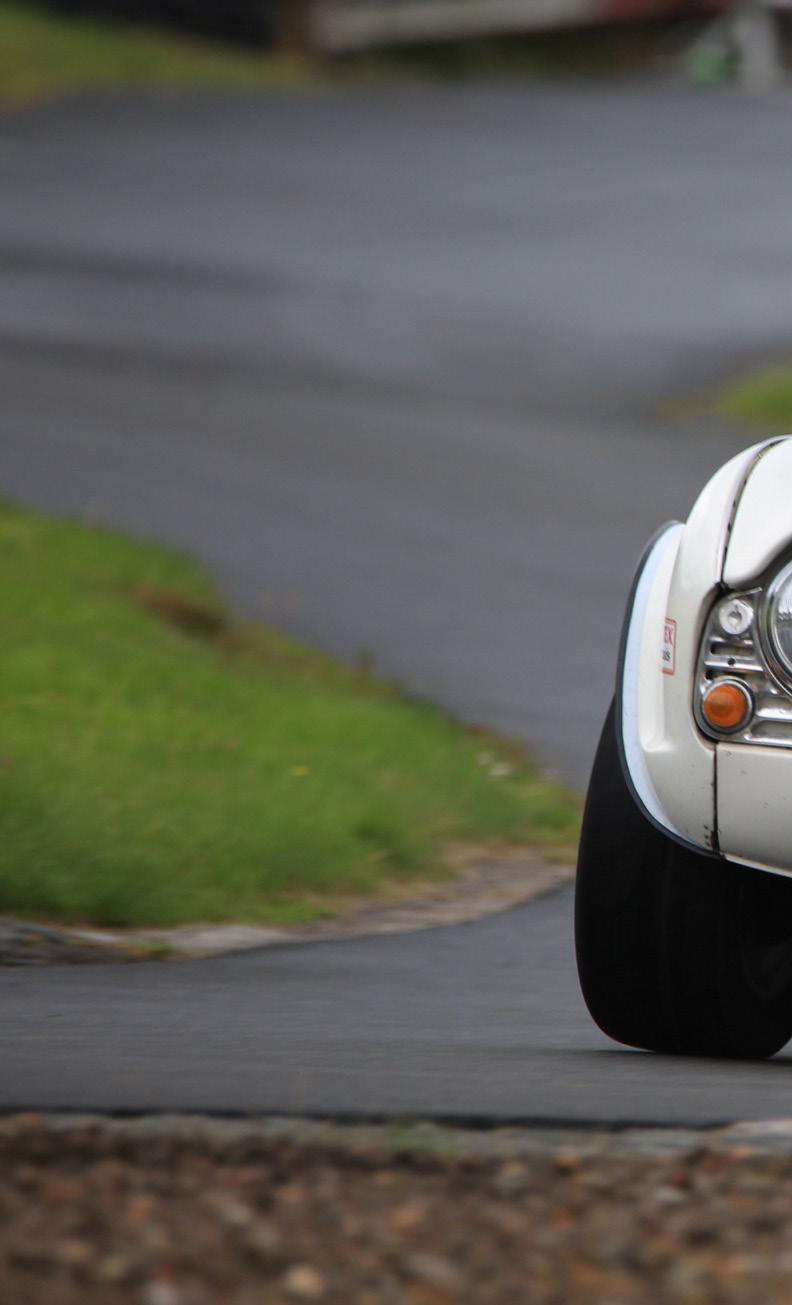






Chris Mcdaid was slip slidding away! Wait till the second Power Tour magazine is published! You’ll see!


Janis Rae back behind the lens.
Rivieres.
Considering the weather there was a stellar turn out of 70 cars across all classes. It was interesting to see a class dedicated to the Mazda MX5/Miata that is promoted by the Eunos Ecosse club. While I have seen many MX5 events on race circuits the Eunos Ecosse club is focused on hill climbs and sprints, MotorWerks Magazine will be working on an article on the club and the cars in the future issue.
Halfway through Saturday I saw Grant Sinclair digging into the back of his tow vehicle and merging with the mini keg of beer. Smiling as he approached me he said, “I have a gift for you from my sponsor. Some of you may remember the article we did on his space frame Imp a few issues ago, At that point he had just got sponsored by the Outlandish Brewing

Just love getting gifts like this!



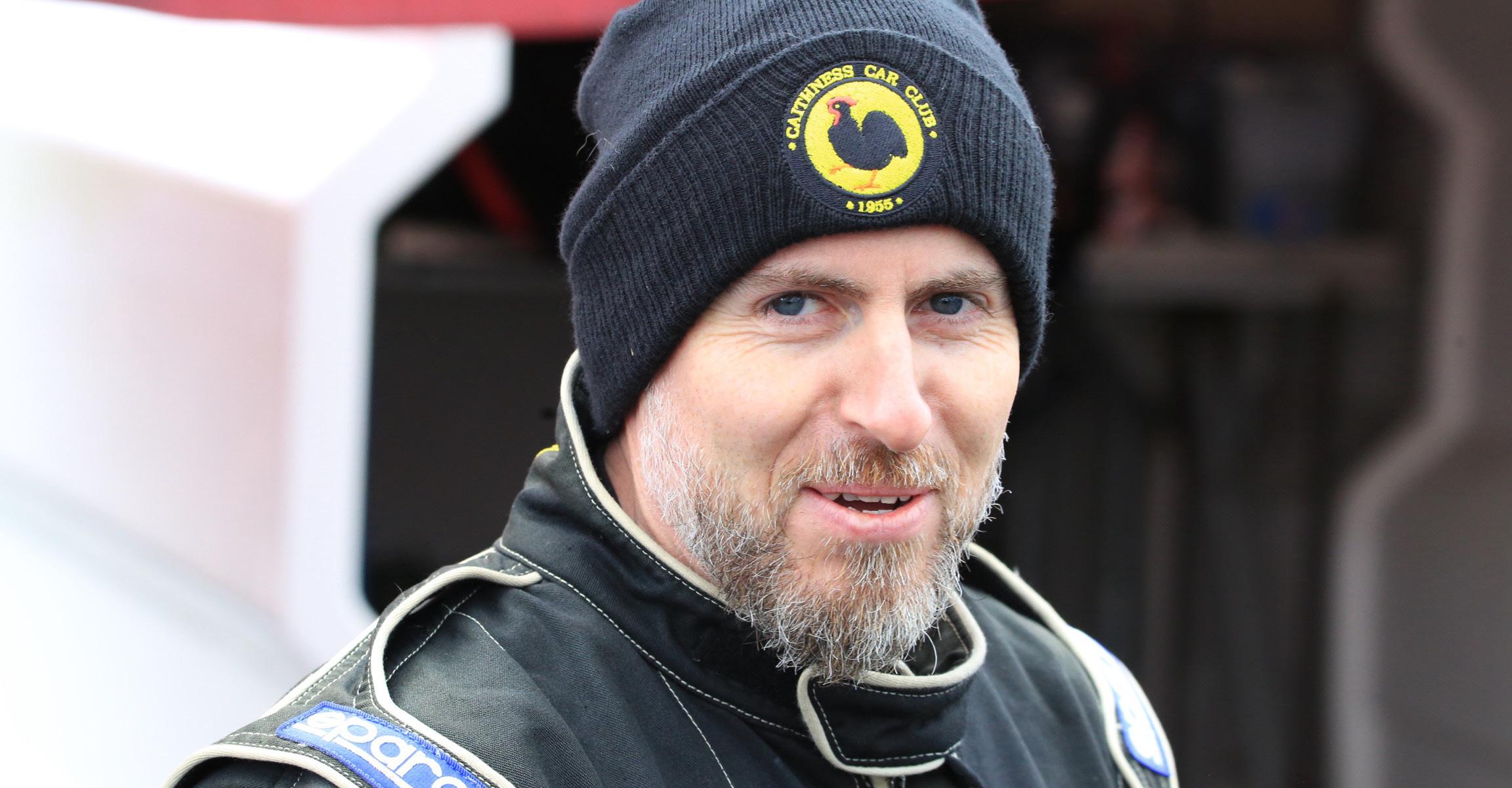
Company of Coatbridge. They were more than pleased the coverage in the article and decided to send me are wee Belter keg in thanks. Now for all you sassenachs a Belter is a Scottish word for excellent, fantastic, or outstanding and unfortunately circumstances prevented us from cracking the keg open before we left for Canada but we left it in the capable hands of beer aficionado Kevin Addison and his wife our niece Julie to review for us.
While it was great to finally meet those, I’ve only been acquainted with on Facebook it was even better to meet new faces, some were familiar with MotorWerks Magazine, others had just seen our posts on Facebook about the UK Power Tour. One such person was the Motorsports UK scrutineer Ken Wallace who turned out to be a good friend of my buddy from Caithness, Alistair Angus. Alistair is the one I blame for getting me into motorsport, lol. He introduced me to go-karting. It was a bit agricultural back then we played about on the local airfield with a Trokart frame and a Villiers motorcycle engine. What made it agricultural was the fact that neither of us thought about shortening the chain to allow the motor to sit lower, so it sat up at the back of our heads and the gears were changed by a tire iron and linkage going back to the motor. It was huge fun and nobody was complaining!
Thankfully, Alistair then got a Zip Californian chassis that was fitted with a Komet K-77 engine, pretty well state-of-the-art at the time and perfect for motivating me. So, after finding an after-school job saving the money, getting an advance from the old man I purchased a Blow Invader with BM F106 motor and that was the start of a passion that has lasted over 50 years. And for the rest of the Kames story you will have to wait for a couple of issues!
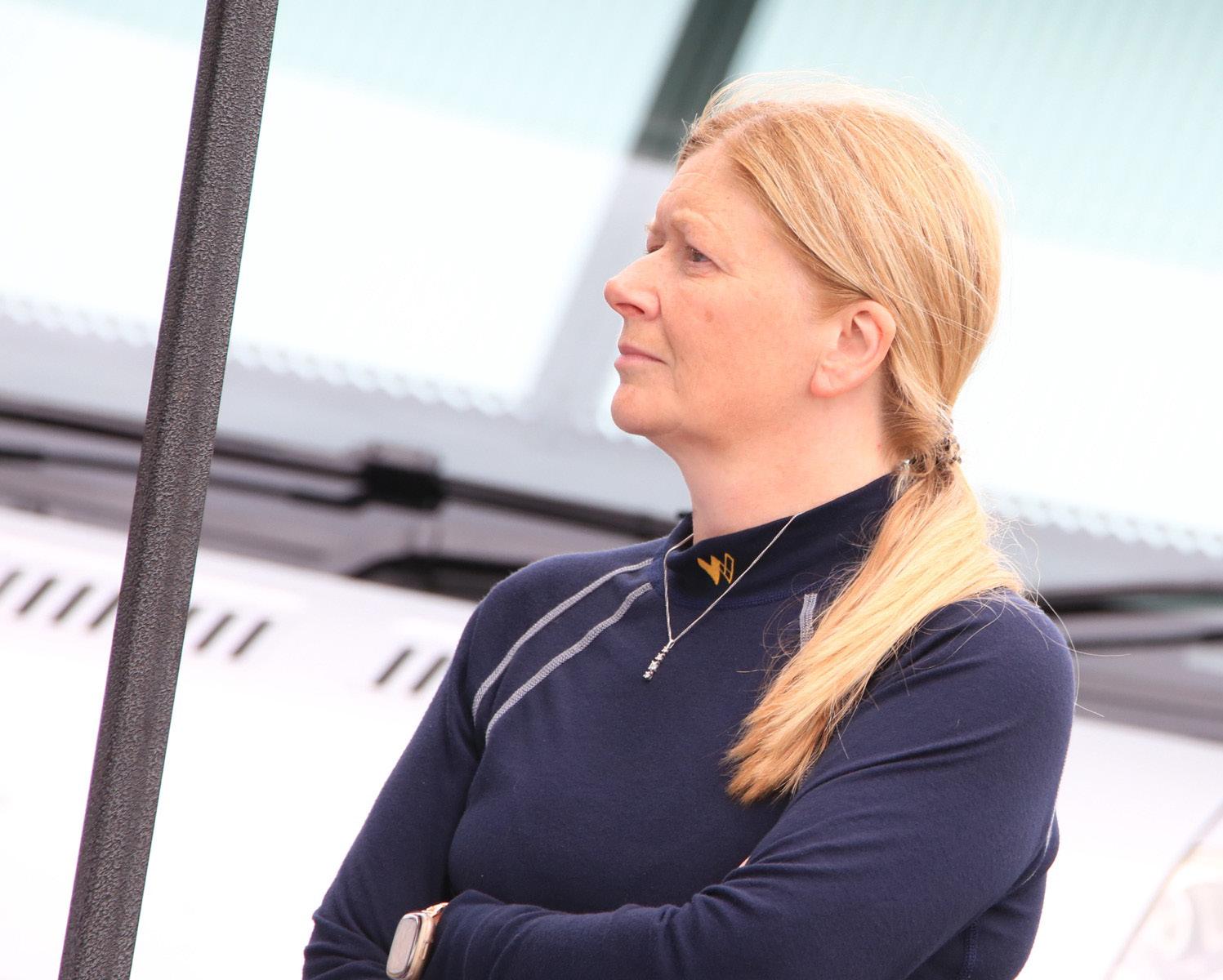




Just watch for a Eucos Ecosse article in an upcoming issue.






Another unexpected highlight of the trip was finally getting to meet one of my favourite motoring writers, Jeremy Walton. Like me, Jeremy is a Ford guy, but unlike most, he actually got to work alongside some of the legends who drove for Ford during his time in their public relations department. He’s penned numerous books on the marque—several of which I proudly own—and we’ve been friends on LinkedIn for a few years, regularly chatting about motoring on both sides of the pond.
As we were spending our final few days in the South of England, Jeremy reached out again to see if we could meet before I returned to Canada. The only window we had was the Wednesday before our flight. I floated the idea of visiting Stonehenge to Janis, since it wasn’t too far from Jeremy’s area, and she was game. But when I messaged Jeremy, he had a better idea— one that would cut our driving time and let us get back to Burgess Hill earlier in the day.
So where did we end up meeting? A place called Middle Wallop—home to the Army Flying Museum.

Now, if I’m being honest, a flying museum scored way more points with me than a pile of standing stones. So, with our niece Julie in the back seat of the Volvo (first person to ride back there, she gave it a big thumbs up), we hit the road. The drive was great: a mix of motorways, A-roads, and B-roads, all handled in classic Volvo comfort. Just under two hours later, we passed an army barracks and followed the signs to the museum.
For some reason, I had it in my head that this would be all about World War I, back when the Royal Air Force didn’t even exist. But as we walked toward the intro video and passed artwork on the walls, it hit me: duh, the army still flies. That sparked a memory—my old schoolmate Billy Tait, who I had missed seeing in Brighton earlier on the trip, used to fly helicopters for the British Army. I knew he lived somewhere near Andover, which wasn’t far from where we were. So I fired off a Facebook message: “We’re at the museum—do you live nearby?” His reply: “Be there in two minutes.”

I was floored. Billy Tait and I were walked by our mothers to our very first day of primary school. We’d been friends all through school, but our paths split when he joined the army and I trained as an electrician at the local nuclear plant. This was easily the biggest, and most emotional—surprise of our trip. I’ll admit it: I came this close to shedding a tear. Just a little
Shortly after, Jeremy arrived. We got tickets sorted and made our way inside to find the ladies. Julie, being a trained engineer, was totally into it—and Janis has always loved air
museums anyway. Since Billy only had an hour, we all went upstairs to the museum café for a bite. Let me tell you, I haven’t seen many museum cafés with food this good—everything was excellent.
Once Billy had to head off, Jeremy and I stepped outside to chat, do a bit of bench racing, and talk business. It was the perfect end to what had been a whirlwind work/vacation trip.
Thanks for making the time, guys—the venue choice couldn’t have been better.
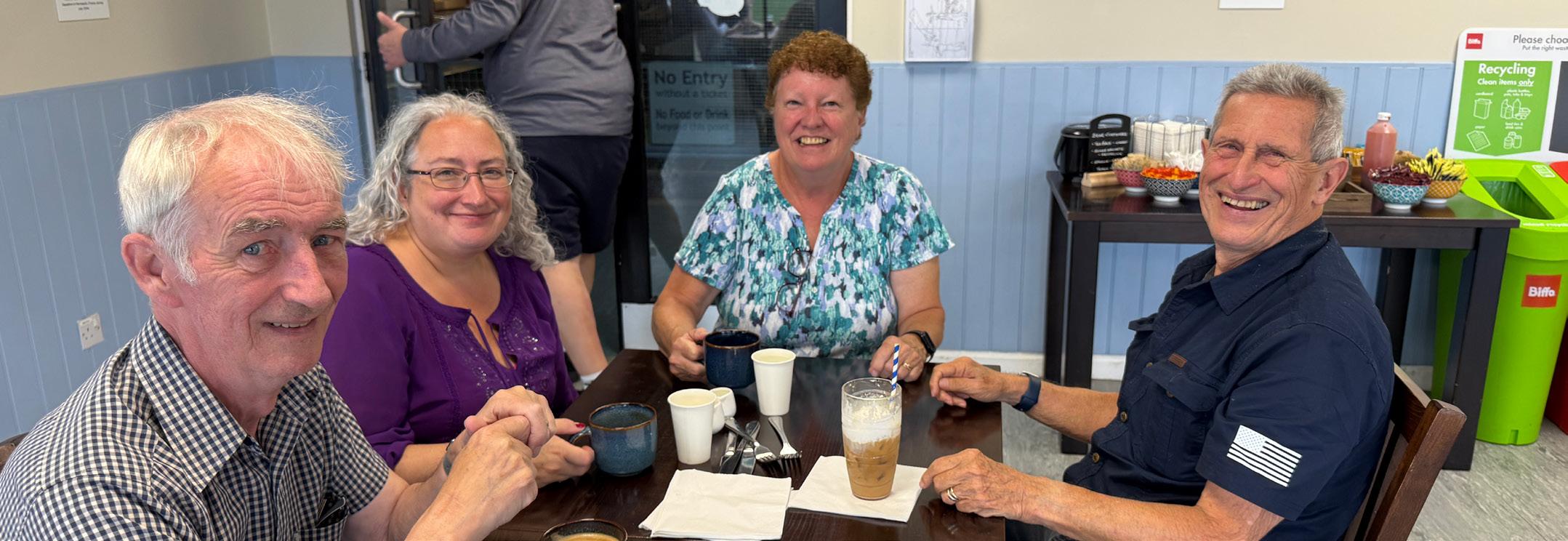




We had big plans for our 2025 UK Power Tour—a mix of work and pleasure that would stretch over five weeks, starting in the last week of June. I knew it was going to involve a lot of driving, so I’d booked what the rental site described as a Mercedes C300 or similar. Sounded promising.
We landed at London Gatwick, just an
hour away from our niece in Burgess Hill. At the Alamo counter, Janis asked the rep, “Are you getting the car we wanted?” The answer: “No, you’re getting a Volvo.” Then she added, “And it’s electric!” Not exactly music to my ears. I explained that charging would be tricky once we headed into rural Scotland. “Oh no, sorry, hybrid,” she corrected. That was better.
Out in the lot, it looked like I might be getting an SUV. But at the end of the line sat a sleek Volvo V90 wagon, or “estate” as they call
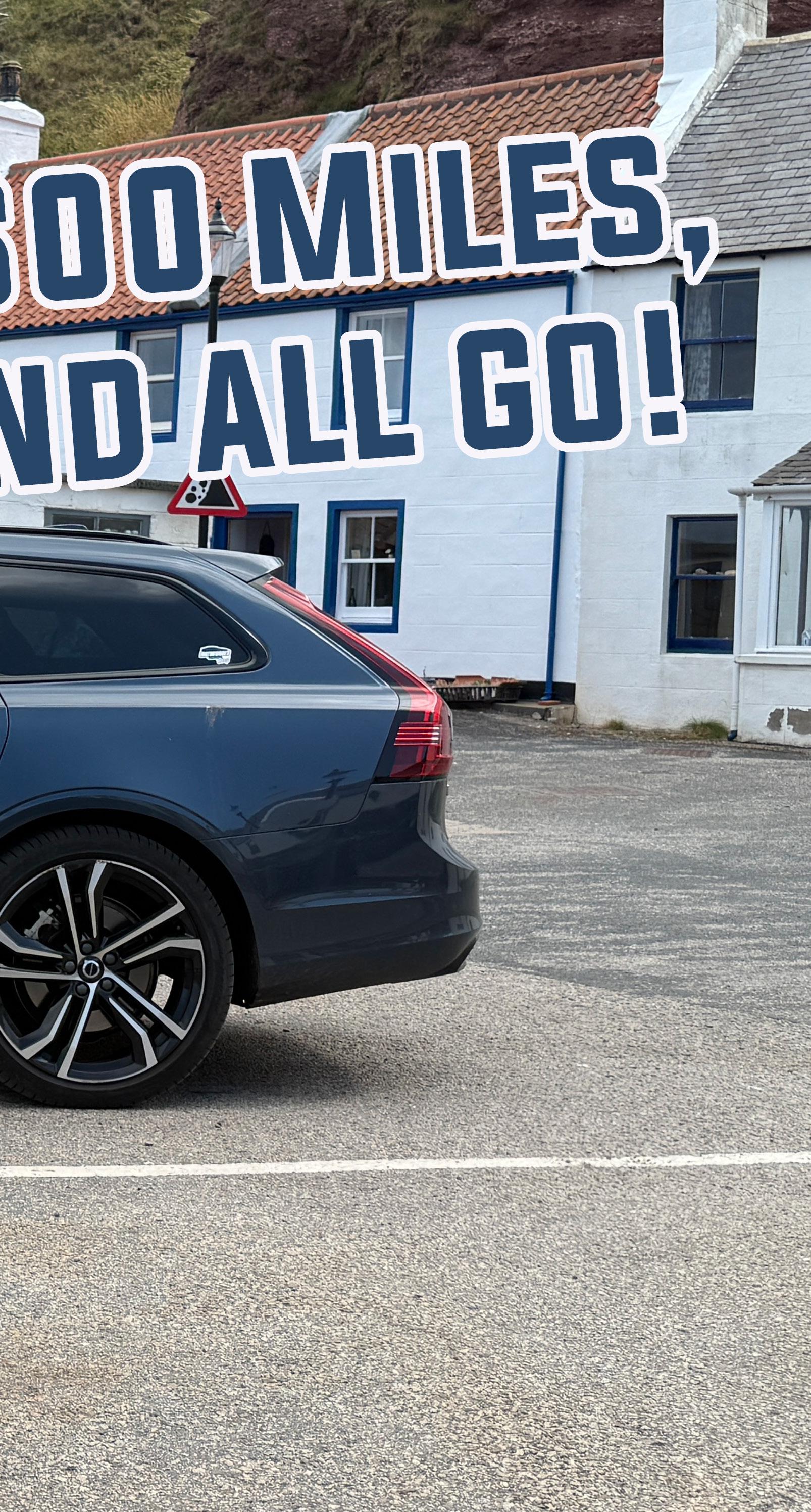

it in the UK. Perfect. The extra space would be a blessing for our camera gear at the racetrack.
So, how did it work out? In a word— brilliantly. The V90 handled beautifully, braked with confidence, and for a big car, it had real punch when I pressed the gas pedal. At first, the sheer size was a bit intimidating on the narrow British B-roads, but I soon found my rhythm and was happily cruising along—strictly at the legal limit, of course.
Over the five weeks, we covered 2,600 miles. The ride was comfortable, the heads-up display handy (when the sun didn’t wash it out), and the GPS—when it decided to cooperate— was useful. One neat feature put the navigation directly behind the steering wheel, saving me from glancing over to the center screen. But one day, it mysteriously switched to showing only the next junction, and I never did figure out how to change it back. The car was packed with smart features, but you’d need months of living with it to master them all.


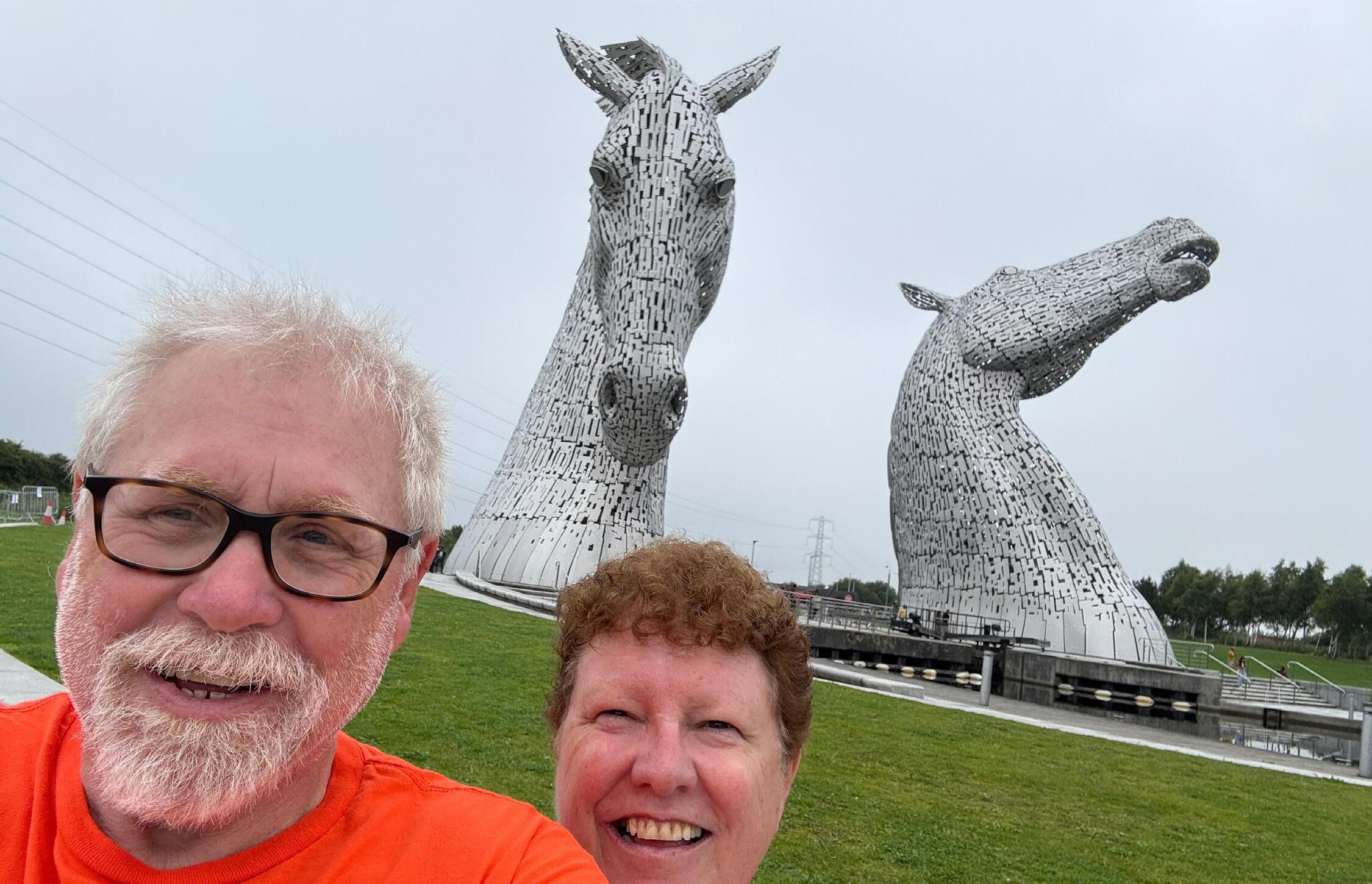



There were quirks. The fuel door release had me diving into the onboard digital manual, and the GPS refused to re-center itself after zooming in—you had to drag the map along manually, which was less than ideal when I was driving solo. Thankfully, Janis took over map duties more than once.
One of my favourite photos from the trip shows the V90 parked by the shore in Pennan, the picturesque fishing village where Local Hero was filmed back in 1983. Sadly, the Pennan Inn didn’t open until 5:00 pm the Friday we visited. We weren’t the only ones disappointed—two other carloads of visitors turned up at the same time, only to find the door firmly shut.
Now ther are some driving points I will be talking about when we publish the full issue and they will be helpful for anyone taking a driving trip to the UK.

Greenock, Janis’s birthplace
